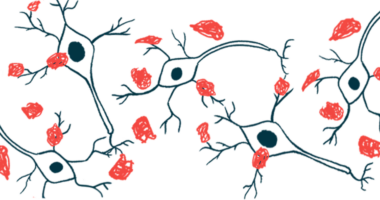CNM-Au8 Raises Cellular Energy in Brains of Patients in REPAIR-PD Trial

Clene Nanomedicine‘s investigational oral Parkinson’s treatment, CNM-Au8, safely and significantly increased energy metabolism in the brains of patients taking part in the Phase 2 REPAIR clinical trials, top-line results show.
Greater energy metabolism is expected to lower oxidative stress in the brain, making more energy available to protect and preserve the dopamine-producing neurons that decay over the course of the illness. Nerve cells are known to require large amounts of energy.
These single-site, pilot trials — REPAIR-PD (NCT03815916) and REPAIR-MS (NCT03993171) —are assessing the metabolic effects of CNM-Au8 on the central nervous system (CNS, the brain and spinal cord), as well as its safety and pharmacological properties, in people with Parkinson’s and multiple sclerosis (MS). Both are taking place at the University of Texas Southwestern Medical Center.
“We believe the REPAIR program represents a critical breakthrough for Clene, demonstrating that catalytically active CNM-Au8 improves energy production and utilization in the brains of people with Parkinson’s disease and multiple sclerosis,” Robert Glanzman, MD, Clene’s chief medical officer, said in a press release.
Specifically, CNM-Au8 led to a significant increase in the body’s conversion of NADH to NAD+ over at least 12 weeks of treatment in the 13 Parkinson’s patients enrolled in REPAIR-PD, and the 11 MS patients in REPAIR-MS. CNM-Au8 is a liquid suspension of nanoscopic crystalline gold designed to increase cellular energy by catalyzing this conversion.
Cells use NAD+ to generate another molecule called ATP, which serves as the main “energy currency” of cells, essentially fueling other biological reactions. Both NADH and NAD+ are forms of NAD, a ubiquitous metabolic enzyme used in diverse cellular processes. Ideally, increasing cellular energy will help cells repair injured neurons.
Changes in the NAD+/NADH ratio were measured using a new imaging technique called 31P-Magnetic Resonance Spectroscopy.
“Using a novel, noninvasive brain imaging approach, the study demonstrated that a key driver of cellular ATP energy production, the ratio of NAD+/NADH, was significantly increased in the brains of patients after three months of daily CNM-Au8 oral administration,” Glanzman said.
“Remarkably, the data also show a significant rebalancing of brain beta-ATP levels in these patients, a metabolic response to treatment that suggests improved ATP energy efficiency,” he added.
With the treatment, patients also reached stable levels of other key energy molecules, including phosphorus and phosphocholine. Individuals beginning the trial with higher levels of these molecules experienced declines, and vice-versa — in both cases, indicating a shift away from unhealthy extremes.
Top-line data also indicate that secondary trial goals of mean changes in NAD+ and NADH from participants’ total NAD were met.
Patients appeared to tolerate CNM-Au8 treatment well, with adverse side effects predominantly being mild and unrelated to treatment. No serious adverse effects were reported, and no one stopped treatment due to side effects, Clene stated. Investigators also did not observe a clinical worsening in patients’ MDS-Unified Parkinson’s Disease Rating Scale (MDS-UPDRS) scores — which measure changes in motor complications and experiences of daily living, and are considered another measure of safety.
“Our next step will be to demonstrate that these brain energetic changes result in clinically meaningful results in patients with Parkinson’s disease and multiple sclerosis,” Glanzman said.
REPAIR-PD may reopen and enroll new patient dosing groups, depending on discussions with trial investigators. But it is currently not recruiting, Clene stated in an email response to Parkinson’s News Today.
Clene intends to present results of these studies at upcoming scientific meetings.
“We believe the study results also strongly support Clene’s ongoing Phase 2 and Phase 3 clinical programs investigating how CNM-Au8’s neuro-reparative and neuroprotective properties may impact disease progression in amyotrophic lateral sclerosis, multiple sclerosis, and Parkinson’s disease,” said Rob Etherington, Clene’s CEO, “and may be broadly applicable to the treatment of neurodegenerative diseases.”







